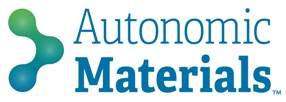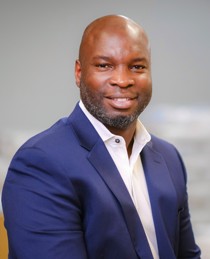
© CEOCFO Magazine -
CEOCFO Magazine, PO Box 340
Palm Harbor, FL 34682-
Phone: 727-
Email: info@ceocfocontact.com


Search





Business Services | Solutions
Medical | Biotech
Cannabis | Hemp
Banking | FinTech | Capital
Government Services
Public Companies
Industrial | Resources
Clean Tech
Global | Canadian
Lynn Fosse, Senior Editor
Steve Alexander, Associate Editor
Bud Wayne, Marketing
& Production Manager
Christy Rivers -



 -
- Autonomic Materials – leveraging Cutting-
Autonomic Materials – leveraging Cutting-
 Dr. Gerald Wilson
Dr. Gerald Wilson
CEO
Autonomic Materials, Inc.
https://www.autonomicmaterials.com/
Contact:
Bill Sante, VP of Business Development
(217)-
Interview conducted by:
Lynn Fosse, Senior Editor
CEOCFO Magazine
Published – August 1, 2022
CEOCFO: Dr. Wilson, according to the Autonomic Materials, Inc site, you are leading the world in protective solutions. How so?
Dr. Wilson: Our perspective in this is from an innovation standpoint. We really focus on how we can leverage the most cutting-
CEOCFO: Is this an area where attention has been paid to the environment, or have you come up with a better way? Where does the concept fit in, and then where, more specifically, does Autonomic Materials come in to the equation?
Dr. Wilson: Like everything else that is an industrial solution, protective coatings are getting more attention, as far as their environmental impact goes. I think that this is an area where asset owners, looking to protect their assets from corrosion, have been searching for good, solid solutions for a while. But there was this traditional tradeoff between the corrosion resistance of your protective coatings, and their ability to be more environmentally friendly. You generally had to pick one or the other, and you could not easily combine these two key properties into one product.
Our technology platform allows us to do that. We are able to put out products that eliminate that trade off, and therefore provide asset owners with a combination of solutions that they would not otherwise have.
CEOCFO: Would you give us a couple of examples of where it would be applicable and what is in your solution, what the materials are, and how you have formulated it?
Dr. Wilson: Some of it is proprietary, but fundamentally, we use a technology platform that was originally developed at the University of Illinois at Urbana-
As far as examples go, there are two general areas where we are applying our technology. One we think of as industrial metal asset protection. There, we have primarily developed a waterborne coating primer, that has good corrosion resistance, because it incorporates our microencapsulated healing agent. We’ve launched this product in a number of verticals, from water parks to routine industrial maintenance applications, to oil and gas, and infrastructure protection. You can think of it as a coating that can be used for any typical industrial metal asset. We market it with multiple different types of topcoats, to give the end-
We also have recently developed a new platform of products that are geared towards protecting metals that are embedded in concrete structures. Examples include rebar, and other types of reinforcing steel structures that are used to give our infrastructure structural integrity. These are primarily comprised of steel that corrodes over time. Therefore, we have used the same technology platform to design coating systems to protect those steel reinforcements, that also facilitate good bonding of concrete to the reinforcements.
CEOCFO: How long do the coatings last? Is this an area of attention?
Dr. Wilson: The reality is that, in general, we do not really think about our coatings and their performance, until some catastrophic failure occurs. It is not something that people generally pay very, very close attention to. Now, when you think about assets that are coated with protective coatings, you can think of something like the structural steel that is used to support signage, for example. Generally speaking, those may be coated in a shop and then transported to a site where they are deployed, and there may be some touching up of the coating that occurs, if there are obvious areas of damage incurred during transit.
The challenge comes from damage that might occur, let us say, in the shop, in transit, or during deployment, that is difficult to see. It is not obvious, and so it is not repaired. That damage will propagate over time, the underlying metal will get exposed to corrosion, and that corrosion will begin, almost right away, because the underlying metal is exposed. That exposure of that area actually begins the maintenance cycle. It determines when you ultimately need to come back and take care of an area that may be corroding.
What our technology does is, damage like that which you might not notice or cannot see, gets repaired by the embedded microcapsules. Therefore, it keeps that area protected and contained, which prevents corrosion. We have seen, in many of our laboratory testing, and in field data, cases where a coating system which typically requires maintenance every 3 to 4 months, because it is being used in a very corrosive environment, like a water park for example, exhibiting 4 or 5 x lifetime improvement.
CEOCFO: What is the competitive landscape? Are there many companies doing some form of what you are doing?
Dr. Wilson: There are two ways to look at how people are thinking about the sphere that we play in. One is the improvement of corrosion performance. You have the traditional big players in this space, the big protective coating companies, and they are generally trying to make their binders better looking for better corrosion inhibiting pigments, and perhaps incorporating better formulation techniques. For example, trying to align the pigments just right, so that there is a difficulty for moisture, for example, to go from the surface of the coating down to the substrate. This is one example of the more common approaches to improving protective coating performance. These approaches tend to be incremental in terms of the amount of new value they unlock for end-
Then there is our approach, which is pretty disruptive, and a complete reframing of the way we think about how coating systems are designed. That is one way to think about it. The other way to think about it is this concept of self-
CEOCFO: For example, in a water park, would the people who are building the structures be responsible for putting the coating on initially? Is it something that the maintenance people would handle?
Dr. Wilson: It certainly would be whoever owns or manages the park. Whoever owns the responsibility of keeping the park operational, and minimizing the lost revenue that comes with downtime. Sometimes that is a park owner, sometimes that is a park manager. We are generally interfacing with the directors of engineering, operations, safety and who are making those kinds of decisions about what products to use.
I should mention that we are also seeing another stakeholder emerge in our interactions with, let us say, water parks or other asset owners, who are essentially the chief sustainability officers of their organizations. These people who are increasingly paying attention to their carbon footprint, and wanting to take advantage of products that allow them to report a lower CO2 impact, ultimately. This increase in lowering CO2 impact or using more environmentally friendly products, more broadly, is something we’re seeing across all our target verticals.
CEOCFO: When you are speaking with the knowledgeable person as a potential client, do they understand what you are doing? Are they skeptical? Is there one thing that they might look at and say, “Oh yes, of course this works?”
Dr. Wilson: It depends on the organization. In general, these kinds of partners have a scope of things that they may be interested in. Sometimes, they would want to get the product, get their hands on it, apply it themselves and ensure that, even though it includes some real cutting-
In most cases though, we are sharing corrosion testing data with them and based on the performance relative to a broad scope of incumbents that they are familiar with, they are often willing, because of the corrosion performance improvement, and how that leads to lower CO2 impact and less downtime, they are usually willing to try the product. This typically leads to broader adoption of the product across their operations.
CEOCFO: Where does cost come into play?
Dr. Wilson: We are priced in line with a premium epoxy coating for the industrial market. Therefore, our pricing is not a departure from the expectations of our customers. I think that everyone understands that, to the extent that you are realizing additional value, it’s going to come at a premium. That is usually what people are focused on. If we can convince them that there is additional value here, through all the data that we have generated, then the pricing is rarely ever as an issue.
CEOCFO: What surprised you as the company had grown and evolved to where you are today?
Dr. Wilson: It would be the opportunity that we now have to be a leader in the coating space, around sustainability. When we started the company, the CO2 impact and carbon footprint measurements were being discussed, but not with the same level of urgency that we are seeing them being discussed with now. I think what has been a bit surprising to me, is the fact that the incumbents, in general, are not leading on this. Therefore, we are positioned lead the transition towards reporting on the CO2 impact of coating systems on assets over time, and develop the technologies and solutions that allow end-
I would have thought one of the bigger players would have made this a more central part of their strategy, but we have not seen that, which offers us an opportunity to lead.
CEOCFO: How are you reaching out to let people know what you have and why they should be using it? What, if anything, might someone miss about Autonomic Materials, that they really should understand?
Dr. Wilson: When we started the company, we primarily focused on developing a technology package, and putting it in the hands of formulators of different types of coating systems. We have since developed our own suite of products, with the idea of eliminating the trade of between high performance asset protection, and more ecofriendly products. Since we have done that, we have developed a number of partnerships that we are scaling.
We are building a sales organization to go out and spread the word, and working with new customers on projects that leverage the solutions that we have to offer. We are in the process of developing a comprehensive marketing strategy that combines some PR efforts and some branding efforts. We have a good presence in a number of the trade publications around our industry, and we continue to invest more in that.
If there is a possibility for someone who became aware of us a few years ago to miss anything about what our company is about, it might be that we do have fully formulated coating systems that bring the self-
Autonomic Materials, Inc. | Dr. Gerald Wilson | Protective Coatings Corrosion | Corrosion Protective Coatings | Autonomic Materials – leveraging Cutting-
“We are positioned to lead the transition towards reporting on the CO2 impact of coating systems on assets over time, and develop the technologies and solutions that allow end-
Dr. Gerald Wilson